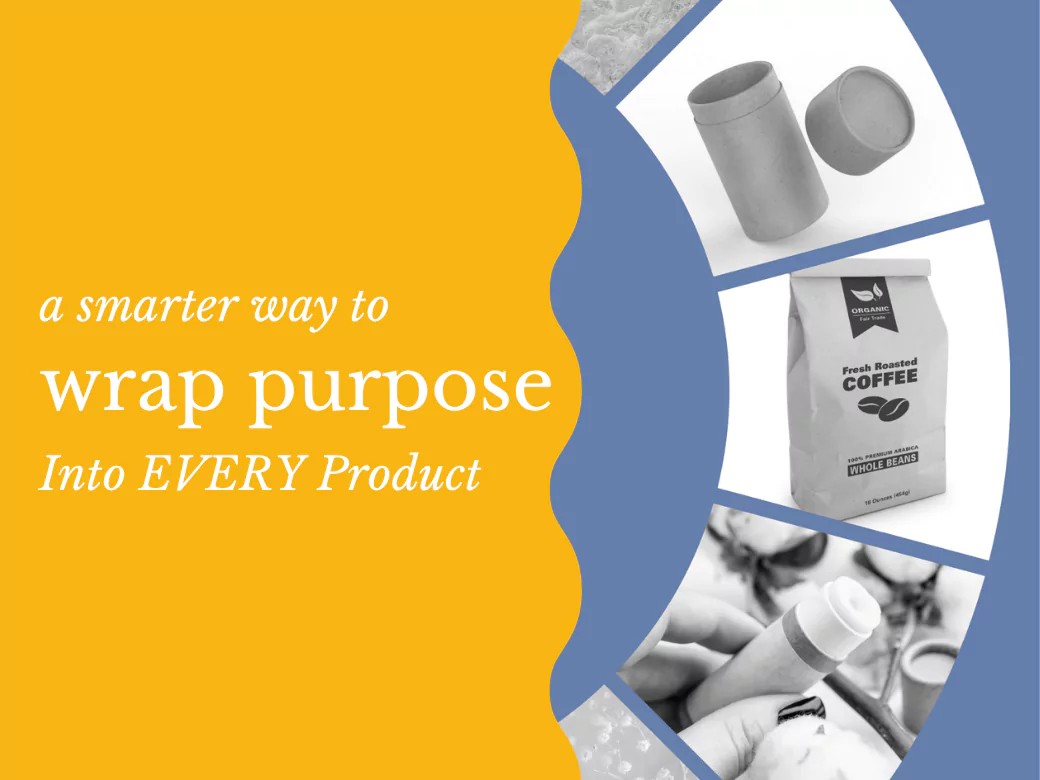Paper packaging has shed its dull image and offers exciting new possibilities.
Today’s paper packaging is the strategic choice. For brands navigating shifting regulations, changing consumer expectations, and tighter environmental goals, paper delivers on performance without the plastic baggage.
Brands are unlocking paper’s potential across formats and markets. Whether it’s a compostable pouch, a rigid paper tube, or a folding carton with a premium finish, brands are designing with both the product and the planet in mind.
Why Paper Still Punches Above Its Weight:
It’s Renewable and Recyclable
Paper is one of the most widely recovered and recycled materials globally, but not all paper is created equal. Prioritizing paper sourced from responsibly managed forests, including FSC®-certified options that ensure environmental and social accountability from forest to shelf is key.
The Forest Stewardship Council® (FSC) certification is more than a label, it’s a commitment to protecting biodiversity, preventing deforestation, and supporting the rights of indigenous communities and forest workers. Choosing FSC-certified paper means your packaging aligns with a globally recognized standard for sustainability.
In a landscape where traceability, transparency, and ethical sourcing are increasingly non-negotiable, FSC helps brands back up their environmental claims with real substance.
Sustainable sourcing isn’t just good practice…it’s a smart way to build trust.
It’s Light—But Not Lightweight
Paper packaging is lighter than many rigid components, helping brands reduce shipping costs and emissions across the supply chain. In fact, reducing packaging weight is one of the most effective ways to shrink your product’s CO₂ footprint, and paper is naturally well-suited for that.
Despite its lower weight, today’s engineered paper structures can be surprisingly strong. They offer durability, stackability, and shelf presence that rival heavier materials, without the breakage risks or bulk. For example, rigid paper tubes can be designed to support high-end personal care or wellness products while eliminating unnecessary inner plastics or foam.
And from a design standpoint? Paper gives you total freedom. Emboss it, deboss it, or foil-stamp it – it’s a lightweight canvas that can carry your brand without carrying the environmental burden.
It’s EPR-Friendly by Design
Extended Producer Responsibility (EPR) regulations are gaining momentum across the United States and globally, requiring brands to take greater responsibility for the entire lifecycle of their packaging. That means materials must not only perform on the shelf, but also be easy to recycle, accurately labeled, and verifiably recoverable in real-world conditions.
Paper packaging checks the boxes.
Unlike many mixed-material plastics that confuse consumers and recyclers alike, paper is widely accepted in municipal recycling programs and easily sorted at Material Recovery Facilities (MRFs). That gives brands a clear compliance path for new legislation like California’s SB54 and SB343, which mandate recyclability labeling and the elimination of deceptive packaging claims. In addition, using FSC®-certified paper strengthens a brand’s positioning when it comes to demonstrating upstream responsibility, a key aspect of EPR frameworks. Bottom line: when EPR reporting becomes mandatory (and it’s already starting), paper is the material that makes life easier for both compliance officers and sustainability teams.
It’s Visibly Sustainable
Sometimes your packaging needs to show your values. Paper offers instant visual cues to consumers that say: “We care about how this was made.” It’s a signal of environmental intention that doesn’t need an explanation.
What We’re Building with Paper:
- Premium tubes for personal care
- Compostable and recyclable pouches for pet treats, coffee, and powdered household cleaners
- Structural cartons for retail display
- Custom-printed wraps, sleeves, and boxboard
- Molded fiber replacing Styrofoam use for protective packaging.
Effective paper packaging transcends its functional role, evolving into a tangible element of your brand narrative. This strategic approach aligns with the expectations of today’s consumers and anticipated regulatory standards. Choose packaging options that are intelligent, adaptable, and environmentally responsible.

